Fatih Nar
Randomized RX for target detection
Dec 08, 2020

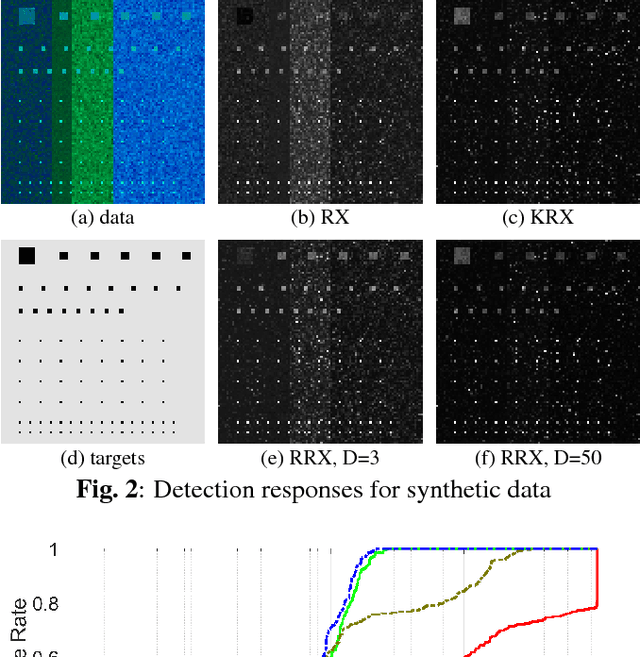
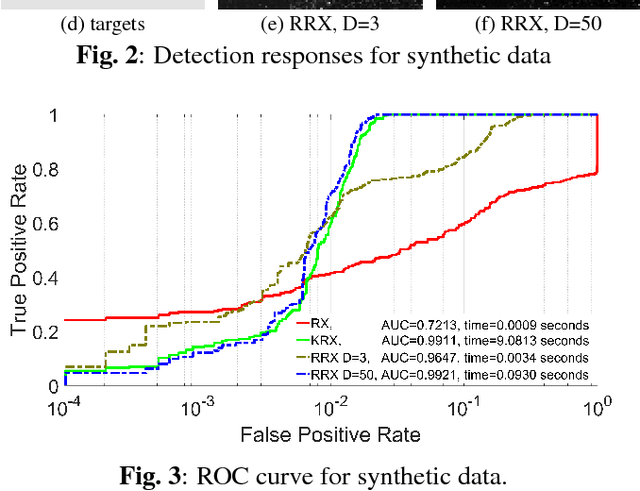
Abstract:This work tackles the target detection problem through the well-known global RX method. The RX method models the clutter as a multivariate Gaussian distribution, and has been extended to nonlinear distributions using kernel methods. While the kernel RX can cope with complex clutters, it requires a considerable amount of computational resources as the number of clutter pixels gets larger. Here we propose random Fourier features to approximate the Gaussian kernel in kernel RX and consequently our development keep the accuracy of the nonlinearity while reducing the computational cost which is now controlled by an hyperparameter. Results over both synthetic and real-world image target detection problems show space and time efficiency of the proposed method while providing high detection performance.
Nonlinear Cook distance for Anomalous Change Detection
Dec 08, 2020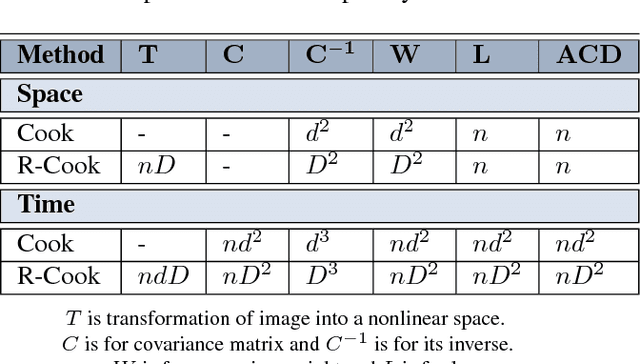
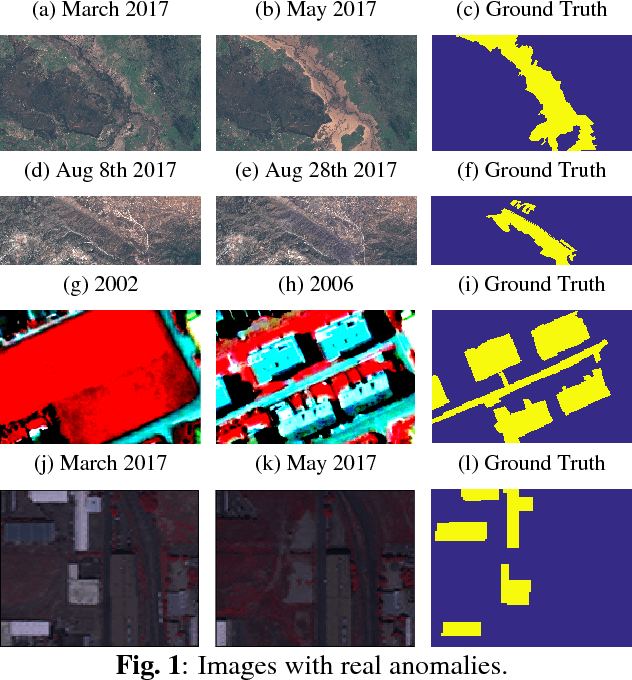


Abstract:In this work we propose a method to find anomalous changes in remote sensing images based on the chronochrome approach. A regressor between images is used to discover the most {\em influential points} in the observed data. Typically, the pixels with largest residuals are decided to be anomalous changes. In order to find the anomalous pixels we consider the Cook distance and propose its nonlinear extension using random Fourier features as an efficient nonlinear measure of impact. Good empirical performance is shown over different multispectral images both visually and quantitatively evaluated with ROC curves.
Efficient Nonlinear RX Anomaly Detectors
Dec 07, 2020
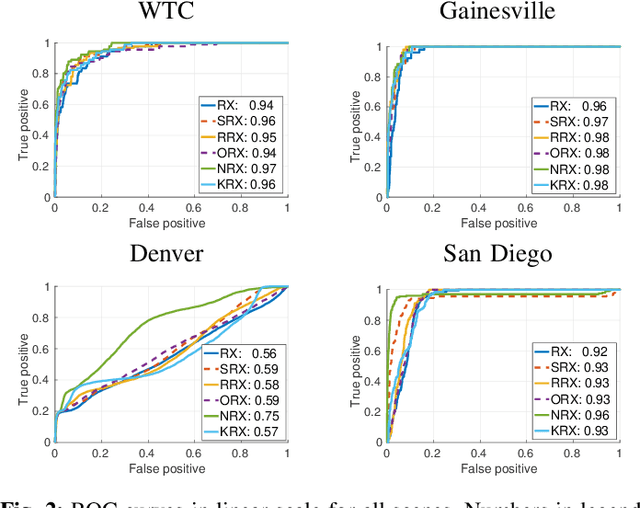
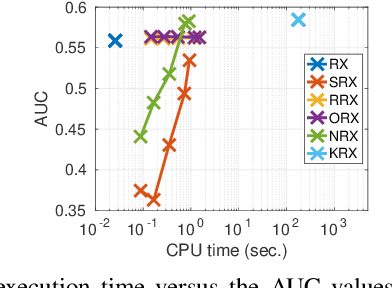
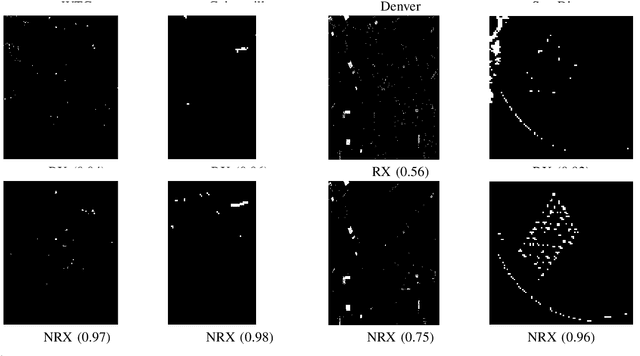
Abstract:Current anomaly detection algorithms are typically challenged by either accuracy or efficiency. More accurate nonlinear detectors are typically slow and not scalable. In this letter, we propose two families of techniques to improve the efficiency of the standard kernel Reed-Xiaoli (RX) method for anomaly detection by approximating the kernel function with either {\em data-independent} random Fourier features or {\em data-dependent} basis with the Nystr\"om approach. We compare all methods for both real multi- and hyperspectral images. We show that the proposed efficient methods have a lower computational cost and they perform similar (or outperform) the standard kernel RX algorithm thanks to their implicit regularization effect. Last but not least, the Nystr\"om approach has an improved power of detection.
Sparsity-driven Digital Terrain Model Extraction
Dec 07, 2020



Abstract:We here introduce an automatic Digital Terrain Model (DTM) extraction method. The proposed sparsity-driven DTM extractor (SD-DTM) takes a high-resolution Digital Surface Model (DSM) as an input and constructs a high-resolution DTM using the variational framework. To obtain an accurate DTM, an iterative approach is proposed for the minimization of the target variational cost function. Accuracy of the SD-DTM is shown in a real-world DSM data set. We show the efficiency and effectiveness of the approach both visually and quantitatively via residual plots in illustrative terrain types.
SAR Image Despeckling Using Quadratic-Linear Approximated L1-Norm
Jan 15, 2018



Abstract:Speckle noise, inherent in synthetic aperture radar (SAR) images, degrades the performance of the various SAR image analysis tasks. Thus, speckle noise reduction is a critical preprocessing step for smoothing homogeneous regions while preserving details. This letter proposes a variational despeckling approach where L1-norm total variation regularization term is approximated in a quadratic and linear manner to increase accuracy while decreasing the computation time. Despeckling performance and computational efficiency of the proposed method are shown using synthetic and real-world SAR images.
Sparsity-driven weighted ensemble classifier
Nov 17, 2016



Abstract:In this letter, a novel weighted ensemble classifier is proposed that improves classification accuracy and minimizes the number of classifiers. Ensemble weight finding problem is modeled as a cost function with following terms: (a) a data fidelity term aiming to decrease misclassification rate, (b) a sparsity term aiming to decrease the number of classifiers, and (c) a non-negativity constraint on the weights of the classifiers. The proposed cost function is a non-convex and hard to solve; thus, convex relaxation techniques and novel approximations are employed to obtain a numerically efficient solution. The proposed method achieves better or similar performance compared to state-of-the art classifier ensemble methods, while using lower number of classifiers.
 Add to Chrome
Add to Chrome Add to Firefox
Add to Firefox Add to Edge
Add to Edge